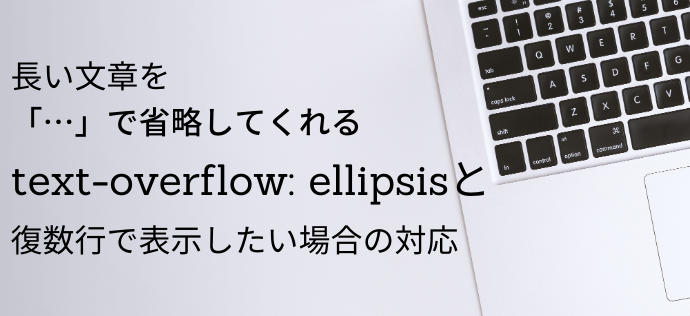

As we discussed earlier, CSS text-orientation will only function if the writing-mode property is set to vertical (either vertical-rl or vertical-lr) and not horizontal (horizontal-tb).ĬSS text-orientation property is neither supported by Microsoft Edge nor Internet Explorer – LambdaTest Real Time Testing Alternative Methods To CSS Text-OrientationĬSS ‘word-break’ property defines how a line break occurs whenever text reaches the end of the line and would overflow its container. To create vertically oriented text, you need to set text-orientation in CSS to upright along with writing -mode set to vertical-lr. You could also perform automated cross browser testing using their Online Selenium Grid through a test automation framework of your choice.Ĭreating Vertical Text With “text-orientation” Property
#Bootstrap 4 edge text overflow ellipsis manual
You can perform manual cross browser testing by directly interacting with real browsers through a VM hosted on their cloud servers. LambdaTest is a cross browser testing cloud which helps you to perform browser compatibility testing in an effortless manner on over 3000+ browsers and browser versions. To achieve a vertical text orientation, set the writing mode property to vertical-lr(or vertical-rl) and set text-orientation to upright. Inline Flow Direction: Specifies the direction in which content flows inside the line of text, and where a new line starts.It can either be top to bottom, left to right or right to left. Block flow Direction: Specifies the direction in which block-level boxes are stacked inside a container.Also, old values like lr, lr-tb, tb, tb-rl, rl have been deprecated. Note: There are 2 more experimental values which should not be used in production code.– ‘sideways-rl’ or ‘sideways-lr’. Writing-mode: horizontal-tb | vertical-rl | vertical-lr Writing Mode can have 3 values – horizontal-tb, vertical-lr or vertical-rl. Also, the direction in the text block progresses – left to right or right to left. ‘writing-mode’ property specifies if lines are set to horizontal or vertical text-orientation.

Lambdatest Experiments – CSS vertical text-orientationīefore using text-orientation, we need to first look into the writing-mode property and understand the concepts of block-flow and inline-flow direction. Head over to caniuse and search for ‘CSS text-orientation’ to get an in-depth insight into which browsers and specific browser version supports this feature. Sideways: All text(horizontal and vertical scripts) will be rotated sideways – 90deg clockwise.Upright: all characters will remain in upright orientation even if block-flow is vertical.Mixed: horizontal scripts will be rotated 90deg clockwise while vertical scripts remain unaffected.Text-orientation: mixed | upright | sideways īy default, text-orientation is set to mix. It will not work if writing mode is set to horizontal(horizontal-tb). It can only be used when writing-mode is set to vertical(either vertical-rl or vertical-lr). Remember that text orientation needs to be used in conjunction with the writing-mode property. ‘text-orientation’ is a CSS property that defines the orientation of characters within a line. The method that we will focus upon in this blog is by the use of CSS text-orientation.

This is where text-orientation property becomes indispensable. Another common use of vertical text-orientation can be in table headers. In such languages, even though the block-flow direction is sideways either left to right or right to left, letters or characters in a line flow vertically from top to bottom. However, many Asian languages like Mandarin or Japanese scripts can be written vertically, flowing from right to left or in case of Mongolian left to right. in IOS I can do something like this th().createUser(withEmail: emailTextField.text!, password: passwordTextField.The necessity for vertical text-orientation might not seem evident at first and its use rather limited solely as a design aspect for web pages. When I'm registering an account using Firebase sometimes error happens, I want to translate some of the error to another language.


 0 kommentar(er)
0 kommentar(er)
